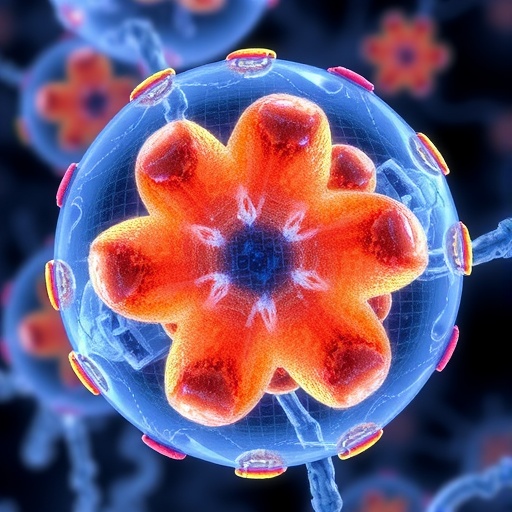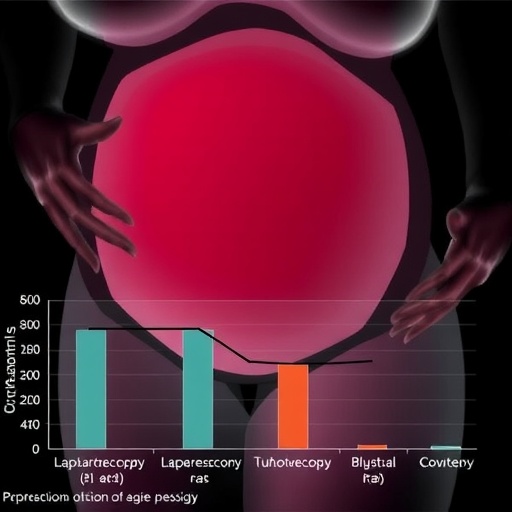
In the relentless pursuit of next-generation energy storage solutions, lithium metal batteries (LMBs) have emerged as a beacon of hope, promising dramatically increased energy densities that can propel electric vehicles and portable electronics into a new era of performance. Despite substantial progress over recent years, one critical obstacle has persistently hindered the widespread deployment of LMBs: the inherent limitations of conventional electrolyte designs. These electrolytes typically depend on dominant solvation structures—specific, orderly arrangements of solvent molecules around lithium ions—that inadvertently impose kinetic and thermodynamic barriers. Such constraints stifle the batteries’ longevity, safety, and energy density, posing a formidable challenge to researchers aiming to push the envelope.
A landmark breakthrough has now been reported that challenges this entrenched paradigm. In a pioneering study published in Nature, researchers have revealed a novel “delocalized electrolyte” design strategy that fundamentally reimagines the solvation environment of lithium ions. By deliberately fostering a more disordered, delocalized solvation microenvironment, this approach disrupts traditional solvation patterns. The result is a dramatic reduction in dynamic barriers to ion transport and enhanced interfacial stability—two critical factors that underpin both battery performance and cycle life. This innovative electrolyte framework ushers in an era of LMBs that can achieve energy densities surpassing 600 Wh/kg, signaling a transformative step forward.
At the heart of this advancement lies the manipulation of electrolyte chemistry to mitigate the otherwise rigid and dominant lithium-ion coordination spheres. Traditional solvation regimes create well-defined lithium-ion complexes with solvent molecules and anions, which, while stabilizing lithium ions, simultaneously hinder rapid and uniform lithium deposition during cycling. The novel delocalized electrolyte design introduces a more heterogeneous molecular environment, preventing the formation of single dominant coordination structures. This molecular-level disorder translates into more fluid lithium-ion dynamics, which facilitate smoother, dendrite-free electrodeposition and robust solid electrolyte interphase (SEI) formation.
.adsslot_1qr5V2CJ0o{width:728px !important;height:90px !important;}
@media(max-width:1199px){ .adsslot_1qr5V2CJ0o{width:468px !important;height:60px !important;}
}
@media(max-width:767px){ .adsslot_1qr5V2CJ0o{width:320px !important;height:50px !important;}
}
ADVERTISEMENT
The practical ramifications are profound. The research team tested this electrolyte in high-capacity lithium metal pouch cells paired with LiNi_0.9Co_0.05Mn_0.05O_2 (commonly referred to as Ni90) cathodes. These cells, engineered with a lean electrolyte amount of just 1.0 g per Ah, delivered an unprecedented energy density of 604.2 Wh/kg at a capacity of 5.5 Ah, while maintaining stable cycling over 100 cycles. An even more stringent test was conducted with an “ultralean” electrolyte condition, reduced to 0.9 g per Ah, where the battery still achieved an impressive 618.2 Wh/kg energy density and maintained substantial cycle life over 90 cycles. These metrics represent some of the highest ever reported for lithium metal battery pouch cells, demonstrating the viability of this electrolyte approach under realistic, resource-efficient conditions.
Beyond single-cell demonstrations, the electrolyte innovation also scaled effectively to larger formats. The team constructed a high-voltage battery pack composed of NCM811 cathodes with lithium metal anodes, reaching operating voltages of 70 to 104 V and a total stored energy of 3,904 Wh. This sizable pack achieved an energy density of 480.9 Wh/kg alongside stable cycling for 25 cycles. Achieving such performance at pack scale underscores the scalability of the delocalized electrolyte concept, a crucial prerequisite for commercial adoption in electric vehicles and grid storage systems.
This study also redefines how the battery research community understands electrolyte design. Historically, the field has focused on identifying specific solvent and salt combinations that stabilize lithium ions through strong, well-characterized solvation shells. While effective to a degree, these dominant solvation structures inherently impose kinetic limitations and can lead to uneven lithium plating and dendrite growth. The delocalized electrolyte concept breaks this mold by embracing solvation disorder as a design principle. This shift encourages a more dynamic solvation landscape that enhances ion mobility, mitigates undesirable side reactions at electrode interfaces, and thus extends battery lifespan.
Moreover, the formation of stable interphases—thin, passivating layers critical for battery durability—is intimately tied to electrolyte composition and solvation structure. The delocalized electrolyte supports the development of uniform, LiF-rich solid electrolyte interphases, known to suppress dendrites and improve mechanical robustness. This chemical environment reduces electrolyte decomposition and parasitic reactions, key factors that have historically limited the practical cycle life of lithium metal batteries under lean electrolyte conditions.
Technological implications of delocalized electrolytes are far-reaching. By enabling high-energy-density pouch cells with lean electrolyte loading, this approach addresses a crucial bottleneck in battery commercialization: the trade-off between energy density and electrolyte volume. Historically, increasing electrolyte volume can stabilize cells but at the expense of gravimetric and volumetric energy densities. Here, the reduced electrolyte content without sacrificing performance heralds not only lighter, more compact battery packs but also cost savings and enhanced safety due to reduced flammability and leakage risks.
Energy storage systems based on lithium metal anodes with advanced electrolytes such as the delocalized design have the potential to reshape electric vehicle technology. Extended driving ranges, faster charging rates, and longer service lifetimes become tangible goals. Furthermore, the high operating voltages and stable cycle performance position these batteries as promising candidates for grid-scale energy storage, which requires both high energy content and exceptional durability.
Yet, despite these encouraging results, challenges remain. Further refinement is needed to extend cycle life well beyond hundreds of cycles, incorporating fast-charging protocols, temperature resilience, and manufacturability at scale. Additionally, comprehensive safety evaluations and lifecycle analyses will be crucial before these electrolytes can see widespread deployment. Nonetheless, the foundational insights into solvation microenvironments uncovered by this work establish a new roadmap for ongoing electrolyte and battery design innovation.
From a scientific perspective, this breakthrough underscores the value of fundamental molecular-scale understanding in addressing macroscopic battery challenges. The interplay between electrolyte molecular dynamics, ion transport phenomena, and interphase chemistry is complex and highly interdependent. By leveraging advanced spectroscopic techniques, molecular simulations, and electrochemical analyses, the researchers elucidated the nuanced solvation behaviors that distinguish the delocalized electrolyte from traditional formulations, guiding rational design choices.
Overall, the advent of delocalized electrolyte design represents a landmark paradigm shift in lithium metal battery technology. It not only pushes performance metrics into previously unattainable regimes but also opens new avenues for exploring electrolyte structure–property relationships. As the demand for cleaner, higher-capacity energy storage intensifies globally, solutions like these will be pivotal in enabling sustainable electrification of transportation and beyond.
The research community and industry stakeholders alike will be closely monitoring ongoing developments and applications emerging from this concept. The blend of high energy density, practical lean electrolyte usage, and scalable manufacturing demonstrated here sets a compelling precedent. If successfully commercialized, batteries built on delocalized electrolytes could accelerate the global transition toward electric mobility and renewable energy integration, fulfilling critical sustainability goals in the coming decades.
Subject of Research: Development of advanced electrolyte designs for high-energy-density lithium metal batteries (LMBs)
Article Title: Delocalized electrolyte design enables 600 Wh kg⁻¹ lithium metal pouch cells
Article References:
Huang, H., Hu, Y., Hou, Y. et al. Delocalized electrolyte design enables 600 Wh kg⁻¹ lithium metal pouch cells. Nature (2025). https://doi.org/10.1038/s41586-025-09382-4
Image Credits: AI Generated
Tags: battery performance optimizationbreakthrough in battery technologydelocalized electrolyteselectric vehicle battery technologyelectrolyte design innovationsenergy density advancementsenhanced battery cycle lifelithium ion transportlithium-metal batteriesnext-generation energy storagesafe lithium batteriessolvation structure challenges





